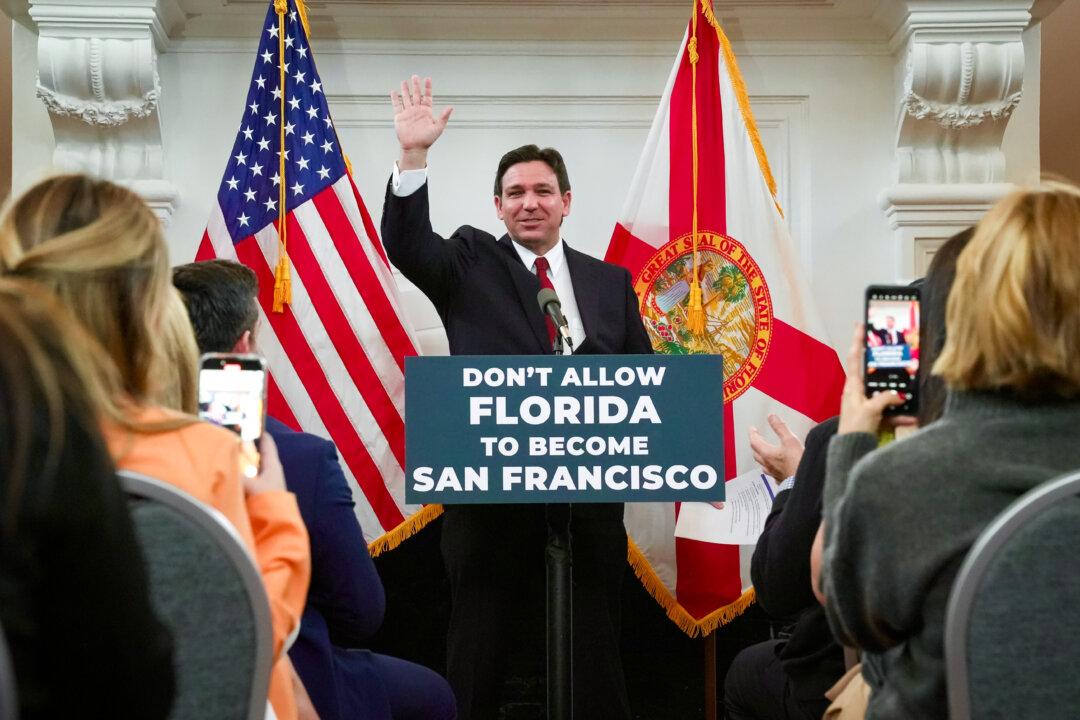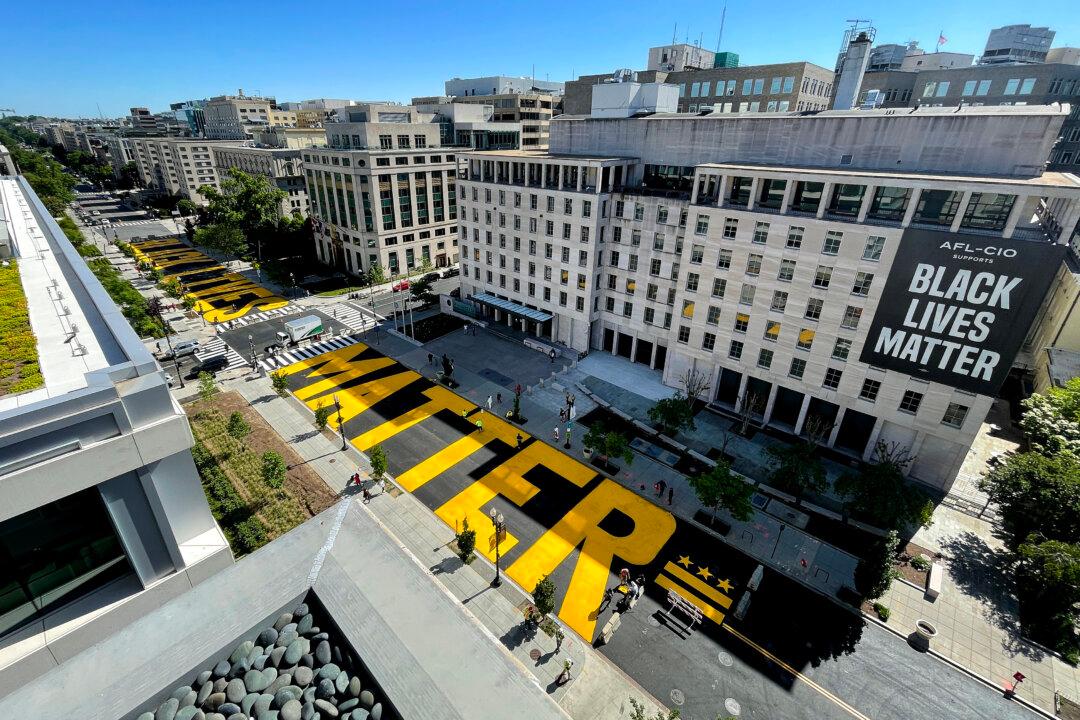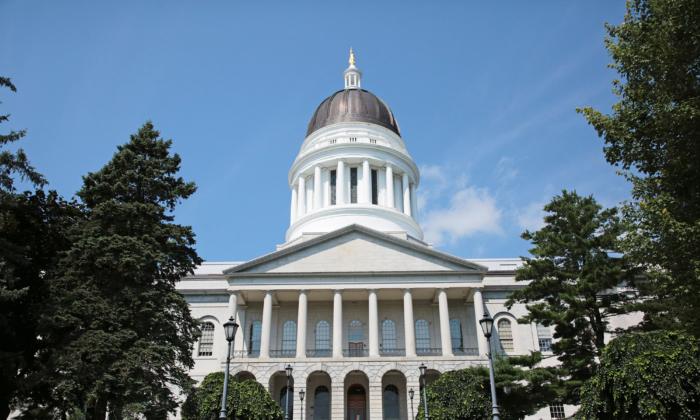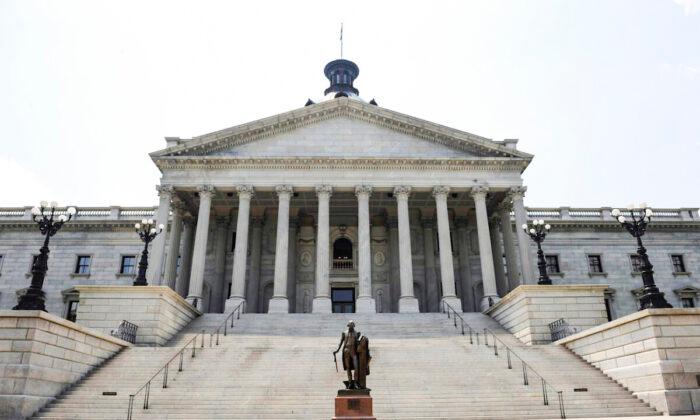Parents prefer schools that don’t teach “the expansion of gender ideology, race essentialism, and other woke projects into K–12 education,” according to a recent report by researchers with The Heritage Foundation.
To dig into the topic, researchers closely examined parent-student handbooks of the 20 largest charter schools in each state. They created a “wokeness measure” for schools, tallying words or phrases from policy handbooks that reflect “contemporary progressive education orthodoxy.” Those red-flag words were: diversity, equity, inclusion, justice, restorative, social-emotional learning, gender identity, and culturally affirming.
They also examined how much each state regulates its charter schools using rankings from the Center for Education Reform (CER). That organization assigns scores according to the degree charter schools in each state are controlled “by parental preferences, rather than those of regulators.”

In charting their findings, researchers found that schools become “more woke” in areas where they’re more controlled by government regulations.
But when parents are allowed to move their children to charter schools through “school choice” programs, in which public funding follows the child, things start to change, researcher Jay P. Greene told The Epoch Times.
“When parents are in charge, you get less-woke schools,” said Greene, a senior research fellow at the conservative think tank.
And that’s true, even in states where the overall political climate is more progressive, such as in California.
School Choice Debate
The recent surge of support for charter schools doesn’t surprise Greene.It coincides, he says, with an increasing focus on “woke” actions by schools, which has drawn backlash from parents across the country.
Along with colleague Ian Kingsbury, Greene measured the “wokeness” of charter schools and discovered a pattern that showed parents have the power to reshape culture within education.
Charter schools are part of a growing parental shift toward school choice.
Nationwide, the term “school choice” has come to represent policies that allow government money for education to follow the child. School districts assign a dollar amount needed to educate each student. School choice policies allow parents to choose where that money is spent.
Traditionally, American parents have either chosen free government schools, expensive private schools, or have homeschooled without any financial support from the government.
In areas with school choice policies in place, if a parent isn’t happy with the neighborhood public school, the money may be used to pay for another education option, such as tuition at a private school or a charter school. Some states, such as Arizona, allow parents to spend the money on homeschooling expenses as well.

Charter schools, which emerged 30 years ago, receive government funding but operate independently. Few hire unionized teachers, according to the National Alliance for Public Charter Schools.
They’re now in 45 states and are at the heart of the “school choice” movement.
Currently, there are 3.7 million students enrolled in 7,800 charter schools. During the 2020-21 school year, 7.5 percent of public school students were taught at charter schools. That was up from 6.8 percent in 2019-20.
Since the 2005-06 school year, the number of charter schools and campuses has more than doubled, and charter school enrollment has more than tripled, the organization says.
But not everyone favors the charter school model of education.
The National Education Association (NEA) teachers’ union holds that increasing enrollment at charter schools harms the already struggling public education system.

In studying details of flourishing charter schools in all states, Greene and Kingsbury documented patterns that further rankle the unions that push far-left political policies and candidates.
They found that when parents choose charter schools that eschew progressive ideology, they send a powerful message—it says they want left-wing political ideology out of schools.
Government’s Effect on Schools
While they fully control standard public schools, state officials in some areas also set some of the rules for what charter schools can teach, how they teach, how children can attend, and how charter schools hire teachers, according to the Education Commission of the States.In states with more government regulations imposed, the largest charter schools had more of the politically progressive words in their policy handbooks, researchers said. Their “wokeness measure” was higher.
Where parents were free to choose the schools they prefer for their children, they gravitated toward “less woke” schools, researchers said.
And because choice creates a natural market economy, the flourishing of the “less-woke” schools leads to a trend of decreasing “woke-ism,” researchers wrote.
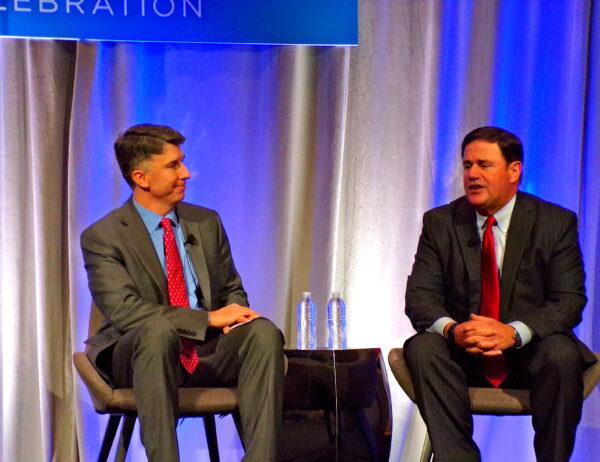
“Regulatory regimes vary widely across states,” authors of the report wrote. “Arizona, for example, tends to receive praise from champions of school choice because it mostly defers to parental preferences to determine when charters are opened or closed.
“Maryland, on the other hand, is favored by the National Education Association (NEA) because the sector is highly regulated and not allowed to grow in a way that meaningfully threatens the public school monopoly.”
The political leanings of the state overall didn’t matter as much.
“Overall, we observed that schools in states with more government regulation and oversight are more woke,” the researchers wrote.
Pandemic Power
It was the pandemic that “laid bare the extent to which radical leftist theories inform classroom instruction,” the researchers wrote.While children learned at home online during school shutdowns, parents peered into “classrooms,” and could observe teaching.
Research showed they also discovered “some teachers unapologetically broadcasting their political beliefs through social media.”

“Wokeness Scores” by State
Arizona and Florida had the lowest “wokeness scores,” researchers found.The “woke” words used as a measure in the study appeared an average of 2.5 and 2.8 times per handbook, respectively, in those states, they said.
Illinois and Washington school handbooks had the highest “wokeness scores.”
The top 20 largest charter schools in Illinois had an average of 49.9 uses of “woke” terms per school handbook. In Washington state, the average was 39 times.
Regulators often control public schools and charter schools, said Greene.
And “the average regulator has a higher preference for woke education than does the average parent.”
That’s why public schools often push teaching in conflict with the value systems of some parents, Greene added.

The research shows the divide between regulators and parents goes deeper than the divide between red and blue states, Greene said.
States with low regulation tend to have less left-wing terminology in their books, even when they mostly elect Democrats.
For instance, charter school handbook language in highly regulated Alabama had many left-wing buzzwords, the study showed. Yet Alabama is, overall, a conservative-leaning state.
But in low-regulation California, an overall liberal-leaning state, charter schools had fewer left-wing buzzwords in charter school handbooks, the study showed.
The more regulations exist, the more power regulators have, Greene stated.
If one universal set of rules keeps charter schools and public schools on the same course, parents don’t have meaningful differences between their options, he said. They have to choose left-leaning schools.
Therefore, it’s no surprise that the biggest charter schools in the highly regulated states tend toward left-wing ideology.
But if states cut regulations on charter schools, the balance of power swings toward parents.
Then parents can have a meaningful selection of options, Greene said. Parents can choose the schools they prefer.

Arizona’s charter schools work because parents can remove their children from them if they do poorly, the report points out.
When parents hold this vital power, school leaders listen to them and choose curricula parents like.
Greene believes most parents prefer schools that have fewer left-leaning policies.
When Parents Choose
A series of “chokepoints” control public education.Two that are controlled by the left, Greene said, are education colleges that train teachers and accreditation processes for new schools, Greene said.
But “the most important chokepoint is the option of finding a different school,” he said. And that gives power to parents.

When parents can choose schools with policies they prefer, those schools thrive and grow, Greene said.
And when given choices, they’re good at using them, Greene said. Even if they don’t have enough time or knowledge to research school curricula, they rely on their neighbors or others they trust, he said.
“Consumers are actually remarkably clever at figuring out ways of getting information without having to invest a lot of energy or time in doing it,” Greene said.
Migrating for School Choice
Because Americans can move between states, governments should pay special attention to local schools, said Greene. Economic historians have shown that the opportunity to get children a good education can play a huge role in persuading parents to move.“When parents pick schools, they want a school whose values align with those they’re trying to teach at home,” Greene said
If schools displease parents, local governments can face a declining tax base as families leave, Greene said. So it behooves local governments to create schools that don’t drive families away, he added.
“We can think of every state and locality,” he said, “as essentially competing for tax base for residents and businesses.”
Increasingly, parents around the country have made their objections known by speaking out at school board meetings against teaching left-wing ideology.
But parents concerned about left-wing ideological influence on children should feel hopeful, Greene said.
“We are making progress where we have empowered parents with expanded school choice,” Greene said.
“Controlling wokeness,” he and Kingsbury wrote in their report, “can be achieved by ensuring that schools are more accountable to parents than to regulators.”

